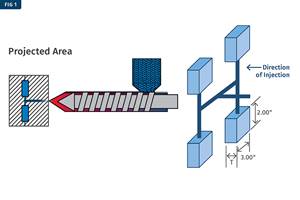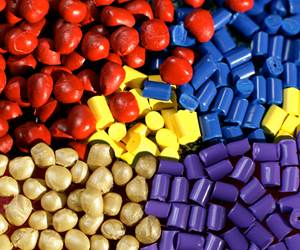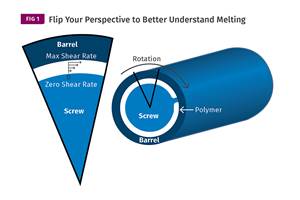Know the Three F’s Of Profile Tooling Design
Designing an extrusion profile and ultimately the die design and sizing equipment cannot be executed successfully without a full understanding of the customer’s quality expectations or specifications.
Designing an extrusion profile and ultimately the die design and sizing equipment cannot be executed successfully without a full understanding of the customer’s quality expectations or specifications. For generations, quality was the last thing anyone thought about in an extrusion process. Quality control was a process that inspected the product to determine what could be shipped and what would be scrapped and sent to the grinder.
The extrusion industry has come a long way over the past 50 years. With the advent of statistical process control (SPC), technology-based extrusion processors better understand their equipment capabilities and can better assess what is feasible and what is not from a tolerance perspective.
NEEDS VS. WANTS
Quality starts at the beginning of the process by understanding the customer’s needs and wants. One way to differentiate your company from others is to understand the “critical-to-quality” attributes in the early stages before the development portion of the process starts.
To be successful in the development of a new profile extrusion, it is important to determine the “needs” and “wants” before designing the respective profile. For some engineers it is difficult to discern between these two criteria. But time spent up front determining what is critical versus what is desired is time well spent and will lead to a successful launch of the new product.
The “needs” are the important attributes that must be achieved for the part to function. Once the needs are understood and engineered into the tooling and extrusion process, you can then engineer as many “wants” as feasible without sacrificing other attributes.
Critical-to-quality attributes describe the Form, Fit, and Function of a product necessary to fulfill customers’ expectations for a successful and timely product launch. It is important to understand these “Three F’s” prior to the final design of a profile extrusion and its tooling:
•Form: the attribute that describes how the part should look, i.e., the aesthetics of the part. If the part is a tube, ovality may be critical. If it is a profile, what portions must be square and true to meet the designer’s form or shape? What areas are exposed to view in the final application that could make the part unacceptable? Are die lines or sink-marks allowable? What are the required gloss level and tolerance and their effect on mating components?
•Fit: how a part interfaces in its environment with other mating components. In a tube, is the ID or OD more critical? Does the ID interface with another component or does the OD interface with a molded or extruded component. In a profile, what tolerances are critical to allow fit-up or “interference” with another component? (Interference fit describes the designed dimensions and tolerances versus mating parts and their respective tolerances.)
•Function: the attribute that describes how a part will perform in the expected environment. Critical aspects are the physical characteristics required such as impact, modulus, and tensile strength, heat-distortion temperature (HDT), and UV resistance, to list a few.
Tolerances and tolerance range cannot be defined arbitrarily. Each extruder and process has unique characteristics dependent on the specifications of the equipment. Statistics (SPC) must be employed to determine the tolerances during the development process. Understanding the statistical mean (average) of a product dimension or attribute and its standard deviation helps determine the tolerances that can be achieved on a given production line.
Related Content
Is There a More Accurate Means to Calculate Tonnage?
Molders have long used the projected area of the parts and runner to guesstimate how much tonnage is required to mold a part without flash, but there’s a more precise methodology.
Read MoreFundamentals of Polyethylene – Part 6: PE Performance
Don’t assume you know everything there is to know about PE because it’s been around so long. Here is yet another example of how the performance of PE is influenced by molecular weight and density.
Read MoreWhat You Need to Know About Leader Pins and Bushings
There’s a lot more to these humble but essential mold components than you might suspect. Following the author’s tips could save much time, money and frustration.
Read MoreUnderstanding Melting in Single-Screw Extruders
You can better visualize the melting process by “flipping” the observation point so the barrel appears to be turning clockwise around a stationary screw.
Read MoreRead Next
Lead the Conversation, Change the Conversation
Coverage of single-use plastics can be both misleading and demoralizing. Here are 10 tips for changing the perception of the plastics industry at your company and in your community.
Read MoreFor PLASTICS' CEO Seaholm, NPE to Shine Light on Sustainability Successes
With advocacy, communication and sustainability as three main pillars, Seaholm leads a trade association to NPE that ‘is more active today than we have ever been.’
Read MoreSee Recyclers Close the Loop on Trade Show Production Scrap at NPE2024
A collaboration between show organizer PLASTICS, recycler CPR and size reduction experts WEIMA and Conair recovered and recycled all production scrap at NPE2024.
Read More











